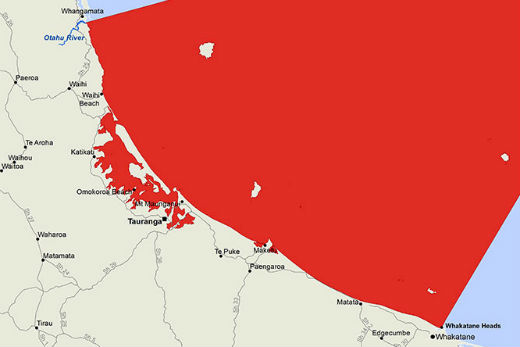Recent shellfish samples taken in the Bay of Plenty have PSP toxins at levels of up to 2.3mg/kg, which is over the safe limit of 0.8mg/kg set by the Ministry of Primary Industries.
Shellfish in the Bay of Plenty have been considered too toxic to eat since February 19.
Paralytic Shellfish Poisoning affects bivalves in the red area.
The affected area is from the mouth of the Otahu River at the southern end of Whangamata Beach, southwards all the way down to the Whakatane Heads.
The area includes Tauranga Harbour, Maketu and Waihi estuaries, Matakana and Motiti Islands, and all other islands along this coastline.
Shellfish affected are mussels, oysters, tuatua, pipi, toheroa, cockles, scallops, catseyes, kina (sea urchin) and all other bivalve shellfish.
Cooking shellfish does not remove the toxin. Paua, crab and crayfish may still be eaten if the gut has been completely removed prior to cooking, as toxins accumulate in the gut. If the gut is not removed its contents could contaminate the meat during the cooking process.
Shellfish and seawater samples are taken every week from popular shellfish gathering areas around New Zealand and are tested for the presence of toxic algae. If the shellfish are not safe to eat, then public health warnings are issued and signs are posted at affected beaches.



1 comment
No surprise
Posted on 28-05-2016 10:52 | By Crash test dummies
The outflow from the Katuna River and the Papamoa outfall and the seepage from the sewerage ponds into Tauranga Harbour provide plenty of reason for that to be so.
Leave a Comment
You must be logged in to make a comment.